Product-Led Marketing
10 mins read
Point of View Marketing: How CMOs Make Prospects Prefer their Brand Over Competitors
Are you looking for ways to make your brand stand out in your prospects’ minds? Here is how to use point of view marketing to achieve your goal.
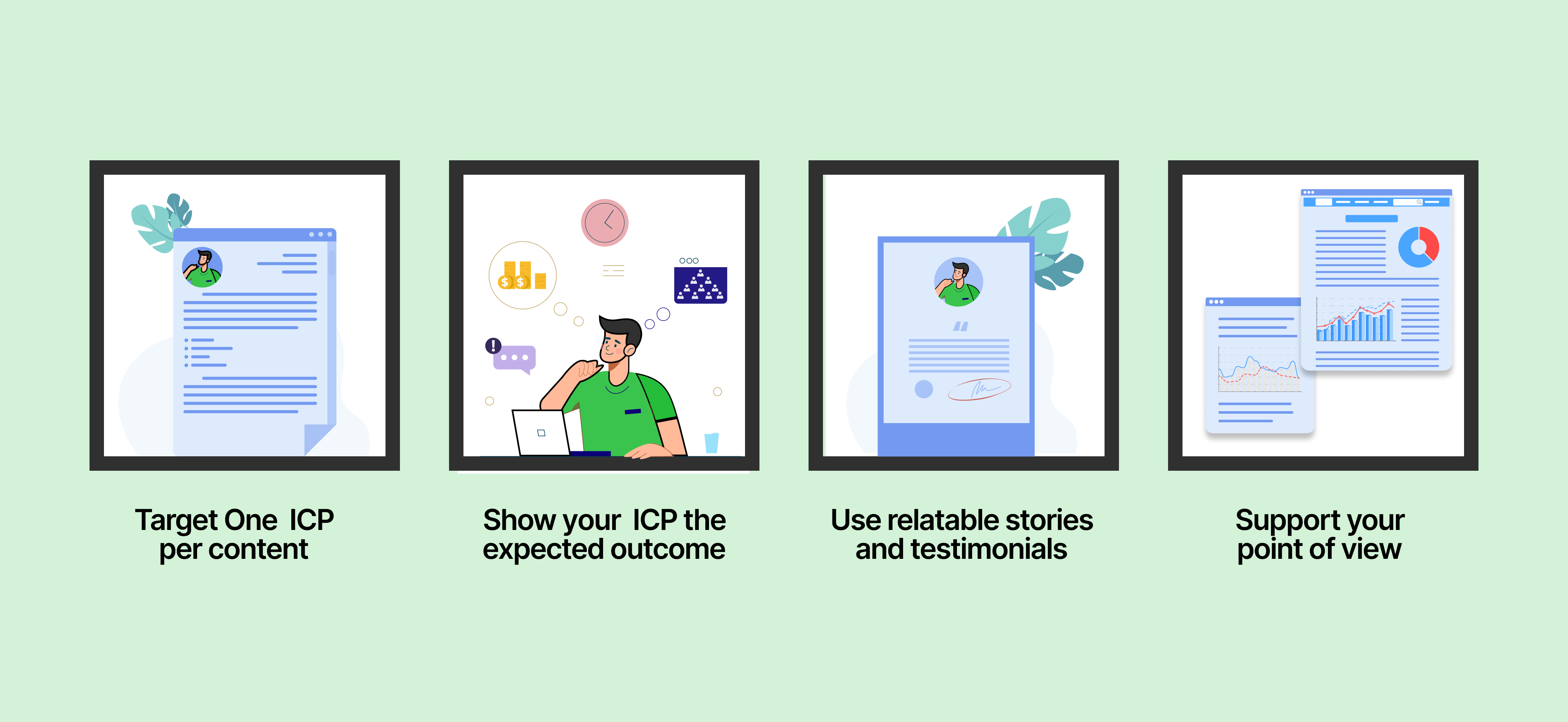

Vincent Otieno
It’s been 6 months since Ben joined as the new CMO.
The founders hired him immediately after raising their Series A. Upon joining, the CEO shared his goals of hitting a higher revenue target the next year. Ben was the optimal choice because, from his experience, they trusted him to execute marketing that’d help them achieve those goals.
Today, it’s not that bad.
There’s been 2-3% month-over-month traffic growth for the blog. The sales team gets some leads, and once in a while closes them.
But deep down Ben is worried.
If he doesn’t improve the quality and quantity of leads marketing generates for his sales team, the company won’t hit the target revenue goal.
Something tells him he can use content marketing to differentiate his company in the eyes of target audiences, earn mindshare, and drive more qualified pipeline. He just hasn’t figured it out yet!
Are you like Ben?
Good.
Cassidy Shield recently shared how his team bought B2B products when he was the VP of Marketing at Narrative Science:

Are you noticing any patterns in his buying behavior?
- Cassidy decided to self-educate and only approach a sales team when ready to buy.
- When Cassidy was ready to buy, he already had a preferred brand. And this is the brand that educated him when he was still passively looking.
Cassidy’s buying behavior presents how most B2B prospects buy SaaS products today. But don’t take it from me.
Korn Ferry’s 2021 Buyer Preference Study supports the first pattern.
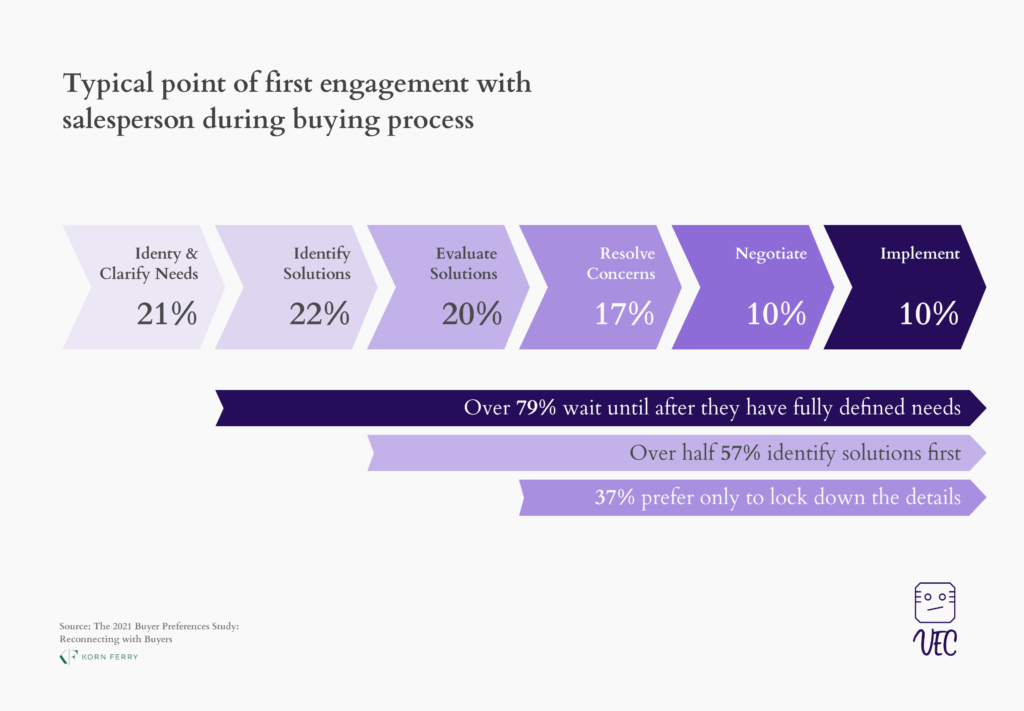
The research showed B2B marketer’s job to educate prospects through content has increased. And that’s because as much as 79% of prospects said they’d only reach out to sales after fully defining their needs.
Professor John Dawes of the Ehrenberg-Bass Institute for Marketing Science proved the second pattern when he wrote:
“…these days we can target people or organizations that are ready to buy. The trouble with this tactic is that people largely use their memories when buying rather than searching. And when they do search, they strongly prefer brands they’re familiar with…To grow a brand, you need to advertise to people who aren’t in the market now so that when they do enter the market, your brand is one they are familiar with. And that they mentally associate your brand with the need or buying situation that brought them into the market. That way, you increase buyers’ purchase propensity. And if you can do that across enough buyers, your market share will grow.”
Got that?
B2B brands that focus on building memory links among their prospects get a competitive advantage in their category.
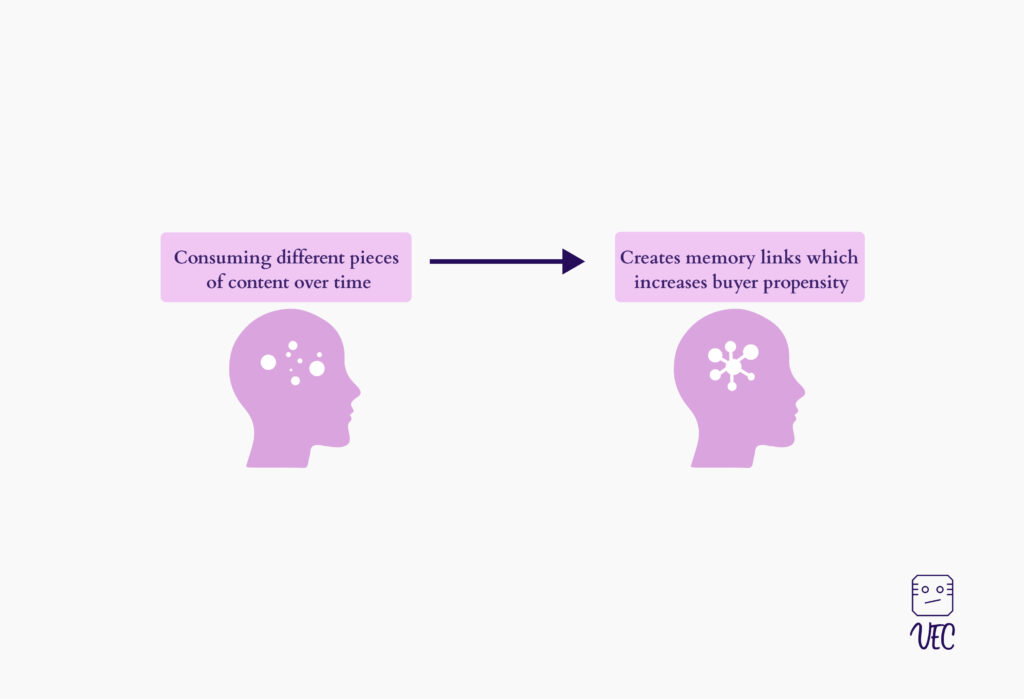
Now the burning question:
How do you build these memory links?
You do it by creating content that stands out in your audience’s mind. And gets remembered long after consumption.
Nowadays, almost every B2B company does content marketing in the form of podcasts, blogs, and social media. But what makes a brand stand out from the rest? What makes people talk about one brand and forget about the other? Or ignore one brand and pay attention to another?
Enter Point of View Marketing.
As a B2B CMO or marketing manager, adopt Point of View (POV) Marketing as it builds memory links in your target audiences’ minds. Do this well, and you’ll increase the chances of prospects considering your brand over competitors when ready to buy.
Now, you might be wondering.What exactly is POV Marketing? How will it help me generate more B2B demand? And How can I incorporate POV Marketing into my marketing execution?I’ll answer these questions and more in this guide. You’ll see how some B2B companies combined POV Marketing with an approach called Product-Led Storytelling to achieve great results.
Before we jump in, consider:
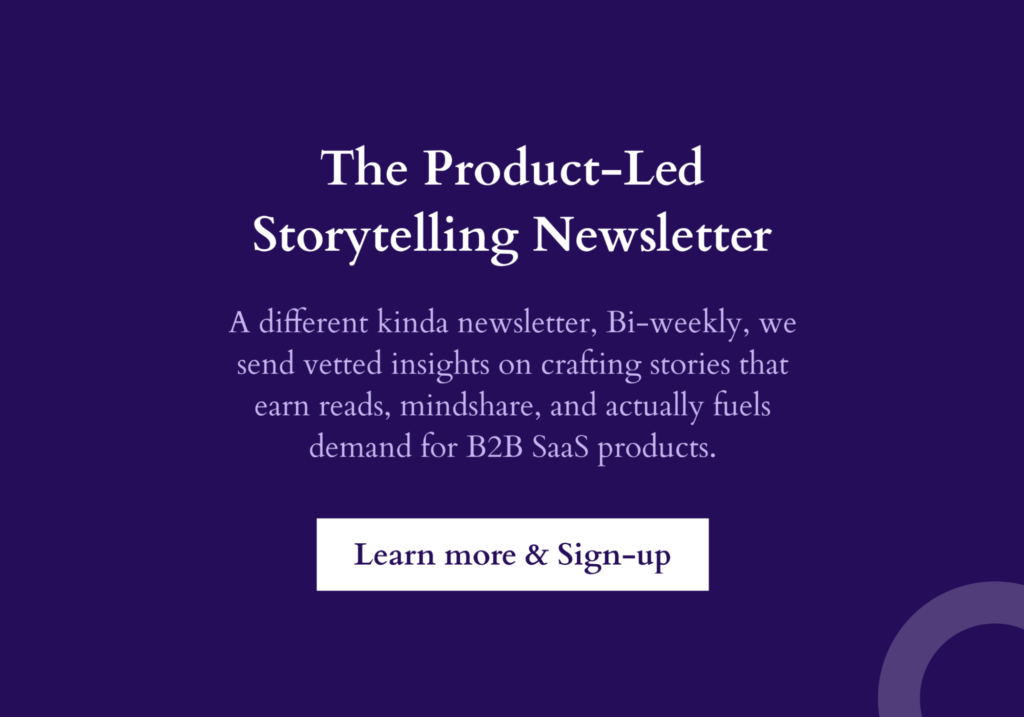
What is Point Of View Marketing
To understand Point Of View Marketing, we must first define what a company’s point of view is. According to Category Pirates:
Your company’s point of view is a different future that you present to your prospects. It shows your prospects how your solution bridges the gap between the problem to the solution. It is what makes you different from your competitors.
For instance, Substack’s Point of View is “A Place of Independent Writing.” The company recognizes that traditional journalism has morphed into a sea of dramatized headlines, inaccurate portrayals of opinions, fiction over facts, and clickbait pictures. So it defines a different future and presents it to its prospects.What is this different future?
Independent writers can now publish their thoughts and build a community of readers who value their ideas. Also, readers can focus on the ideas, people, and topics that hold the most value and meaning to them.
PoV marketing is about educating your prospects to prioritize their needs while keeping your brand at the top of their minds. So when they are ready to buy, they choose you as Cassidy did with Gong and Drift.
Think of it like content marketing that shows readers why your brand is different and how your product can help them get their desired outcome in a unique way.
Point Of View Marketing Clarifies Your Content Pieces
In simple terms, Point of View marketing involves executing marketing campaigns that align with your company’s point of view. It’s about crafting content pieces in the context of why readers should consider reading the piece and the outcome they should expect.
Let’s revisit our example, Substack.
Say Substack was to create an article on why journalists should create email newsletters on their platform. The article would reveal the pains of traditional journalism, such as the inaccurate portrayal of opinions, and paint a different outcome of independence if they switch to Substack.
It’s not enough to just tell your readers how they will get the desired outcomes, but also to show them right there on the content.
For example, if this hypothetical Substack’s article were to persuade journalists, it would have to do more than just say they’d gain independence. It must show relatable stories of journalists who switched to Substack and now have a community of readers who share their ideas. It would also show other benefits of using Substack, such as ease of use and flexible pricing through screenshots and GIFs of its features in action.
This principle of show, don’t just tell, is part of our content studio’s values, and it is called Product-Led Storytelling.
Product-Led storytelling is the art of crafting discoverable stories by showing (and not just telling) how your well-defined ICP (ideal customer personas) can overcome specific challenges, using your SaaS product.
This approach to POV content marketing works:

Now, let’s look at how you can adopt Product-Led Storytelling for your POV Marketing.
How To Implement Point Of View Marketing Using Product-led Storytelling
These four steps detailed below will show you how to craft content pieces to keep your product at the top of your prospects’ minds.
Target One ICP Per Content
The first thing to nail when writing a POV content with Product-led Storytelling (PLS) is to write for only one person at a time.Why is this important?It personalizes your content and makes your reader feel understood.
Now, to do this effectively, segment and define your target audiences into ICPs. Defining your ICPs lets you learn about the pain points and how your product can help them solve them.For example, as a SaaS company, you may be targeting CEOs, Heads of Growth, Sales Managers, etc. So when your content team is writing a content piece, ensure they choose one of these ICPs (such as a CMO) and tailor the content to them.
We practice what I preach.
VEC has a broad target audience consisting of B2B SaaS founders, CMOs, Content managers, and Venture Capitalists. The problem addressed in this piece, for instance, makes more sense for a CMO or Head/VP of Marketing.
And that’s why I crafted it specifically for you.To make this content even more personalized, I first consulted our CMO ICP StoryScript (a more advanced version of customer personas). Here’s what it looks like:
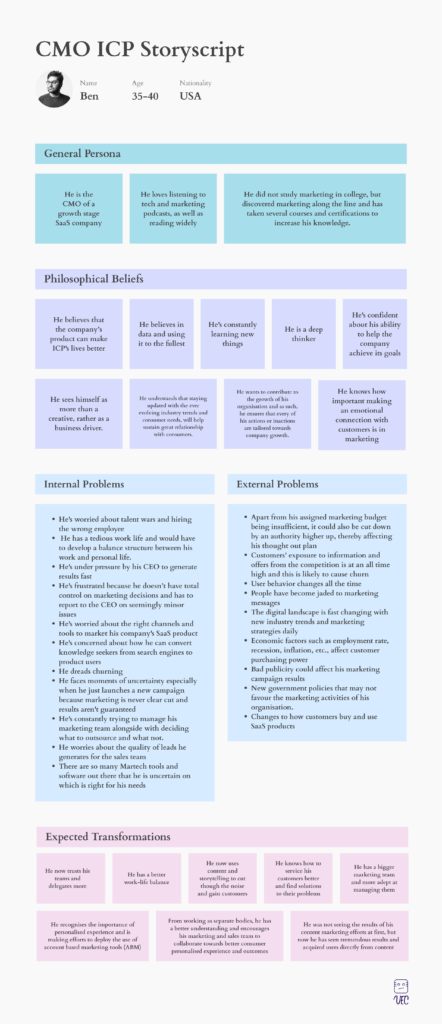
Show your ICP the expected outcome
Next, show your target reader the outcome they are craving.
How do you do this?
Create a compelling promise-driven headline. Use a story-driven introduction. Call out your ICP right off the bat to repel non-fits.
For example, this story aims to show CMOs how to use content to make prospects choose their brand when ready to buy. Again, my headline clearly communicated this outcome.
Otherwise, you wouldn’t have clicked it.
However, because my promise-driven headline could be attractive to other ICPs of ours (Content Managers, SaaS founders, and CMOs), chances are they’ll click it. But I’m only interested in CMOs. So I started with a relatable story to call you out in my introduction.
When Content Managers and SaaS Founders realize that this piece is not meant for them, they will leave to avoid wasting their time. Or probably share with their CMOs.
Support your PoV
Anyone can make a claim.
But for people to believe you and consider using your product to solve their problem, you must support your claims. And in content marketing, we use subject matter expert (SME) quotes and relevant statistics to reinforce a PoV.
Subject matter expert quotes add credibility to your point of view.
SMEs have a wide range of experience and expertise in a niche. They’ve gone through the challenges your ICP is looking to solve and found the solutions. Use their views to support your PoV, and target readers are more likely to believe you.
In the words of Neil Patel, a top digital marketing expert:
“An SME can provide insight into your customers’ thoughts and questions, improving reliability and authority more than if they were written by an outside source with limited knowledge. This can go a long way in improving audience trust, as they will know they are getting expert information from someone who knows what they’re talking about.”
Statistics also persuade your readers to buy into your point of view. It makes your content more compelling, keeping your readers engaged.
Which of these two paragraphs is more compelling?
- You should prioritize investing in video marketing as part of your content marketing strategy in 2022.
- According to
If I were the reader, I’d be eager to know more about video marketing after consuming the second paragraph.
Also, use fresh statistics whenever you can. Adding data that’s less than 3 years old in your content is better than those published 5 or more years ago. More recent data helps to accurately present what is going on in the industry at the moment.
Use relatable stories and testimonials
An effective way to help your reader understand how to use your product is to show them someone in a similar situation.
Let’s visit Substack again.
Say I’m writing a Substack article persuading journalists to create email newsletters on the platform. I’m better off giving the story of a journalist who began using Substack out of the need to share his raw opinions on a subject matter. And I’ll resonate more if I share how he was tired of working with publishing companies that edited his stories in the way they preferred.
Any journalist yearning for independent writing would love this story. It’d help them visualize my product, Substack, taking them to their promised land, a place of independent writing.
Makes sense?
Customer testimonials told in relatable stories with your product strategically weaved into the content is PoV marketing on steroids.
If you read the testimonial of someone who used my product and got the outcome you want, you’re more likely to believe it works.
Now compare that to the regular, stand-alone case studies most B2B companies publish today. Even though it gives your sales team something to share with prospects, it is less powerful.
Prospects may think you made it up just to persuade them.
It’s why at VEC, we craft content to support a company’s point of view via relatable stories, then strategically weave our clients’ products into them. We call it Product-Led Storytelling and our clients say it works.
Like this one:
Soon I will share examples of companies implementing PoV Marketing with traces of Product-Led Storytelling.
In the meantime:

PoV Marketing with PLS Examples
Now that you’ve seen how to do PoV marketing with Product-Led Storytelling, these are some of the companies doing it right:
Leadfeeder
Leadfeeder is a B2B intent data platform.
They help marketers and salespeople identify companies ready to buy by tracking their onsite activity. They want to make salespeople focus on great leads and avoid wasting time on leads that won’t convert.
With a point of view to make lead generation as easy as possible, Leadfeeder injects this into their content marketing along with elements of PLS to acquire product-qualified leads.
To achieve this, they create content around high intent keywords and show prospects how their product can help them get the desired outcome.
For instance, this article on the Leadfeeder blog about data-driven demand generation strategy is an excellent example of projecting their PoV executed with stints of Product-Led Storytelling. Anyone searching this keyword wants to know the elements of a successful demand generation strategy and how to improve their results.
People who read this post will know the difference between a good demand strategy and a bad one. They will also have a better picture of how to use Leadfeeder to launch a demand generation campaign that gets results.
Daire Summerville, Leadfeeder’s Digital Growth Manager, takes the reader through how he would create a demand generation strategy that matches his target ICP. He also shares screenshots of the product in action, revealing how its features will help you achieve your goal.
In the screenshot below, you can see him showing readers how to use custom feeds from Leadfeeder to understand intent data.
With this demonstration, the reader is likely to believe that Leadfeeder is the right tool for creating a demand generation strategy.
HoneyCart
HoneyCart, a former client of ours is also a good example of a company that has used Product-Led Storytelling to execute its PoV and fuel demand.
As is our usual practice, we spent the first month understanding their unique offering and identifying ICPs.
We then designed a Strategic Narrative (or Point of View) to show their uniqueness and guide our content marketing activities.
And the results of all these?
An increase in organic clicks rate by over 800% (~580 to over 4,850), Impressions grew by over 400% and clickthrough rates doubled in just 6 months.
See for yourself:
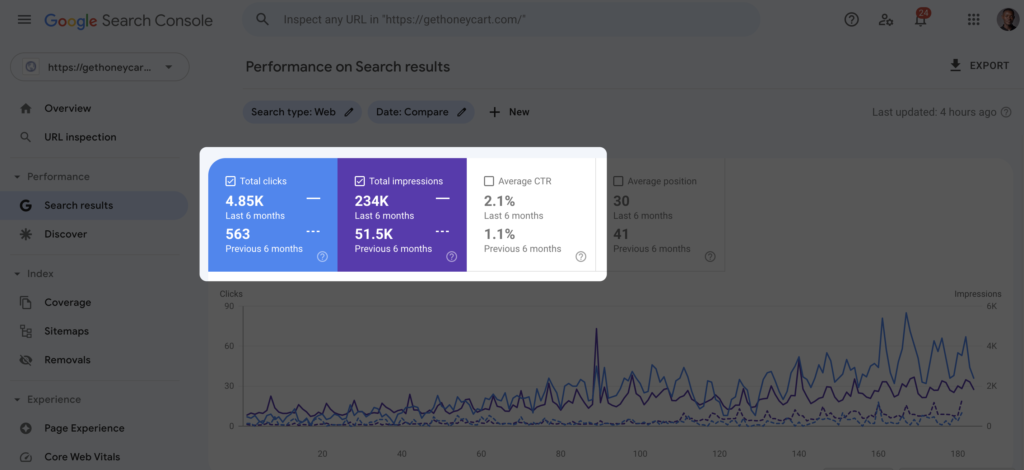
And before you say it, these are not just vanity metrics. The Product-Led Stories we crafted captured real demand and customers:
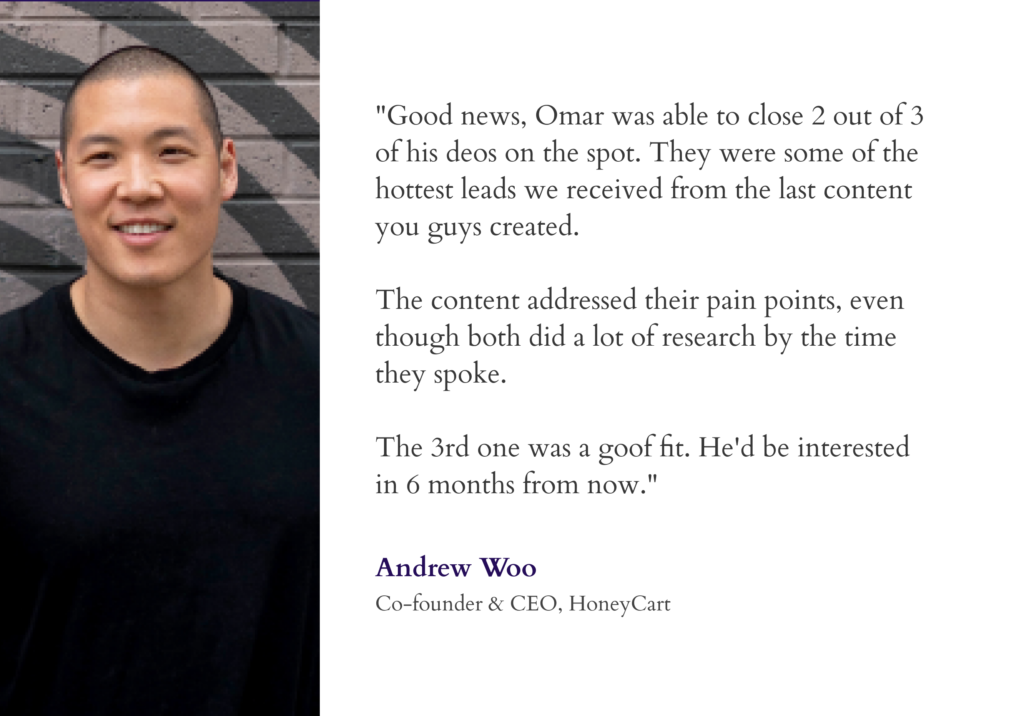
Execute Your PoV with Product-Led Storytelling
Did you notice something about the two examples of Point of View marketing?
In case you missed it, they showed how to build memory links of your brand among your prospects by using well-crafted content to:
- Project what makes you different in your industry.
- And showing how your product helps your ICPs solve the problem they have to get their desired outcome.
Adopting these steps will ensure you create content that stands out in your audiences’ minds. Your buyer’s purchase propensity increases when you show and not just tell them how to solve their problems. So when they are finally ready to buy like Cassidy, they’d consider your tool.
And like Ben, you’d execute marketing that’d help your company achieve its revenue goals, increase its customer base, etc.
If you need help implementing all these, see our Product-Led Storytelling guide. Or join our Newsletter community (below) for continuous vetted insights on crafting content that earns mindshare and drives a qualified pipeline.

Vincent Otieno
Vincent is a thinker and creative who loves crafting stories that makes his clients buy into his point of view. When he is not working, he hangs out with friends to learn something new.
Rare insights, in your inbox
How do SaaS Founders and B2B Content Leaders build brand and drive growth through story-driven content execution? Dig that, plus rare Product-Led Storytelling insights, in this bi-weekly newsletter.
Get a copy of our Story-driven, Content Quality Checklist –FOR FREE– once you subscribe.

